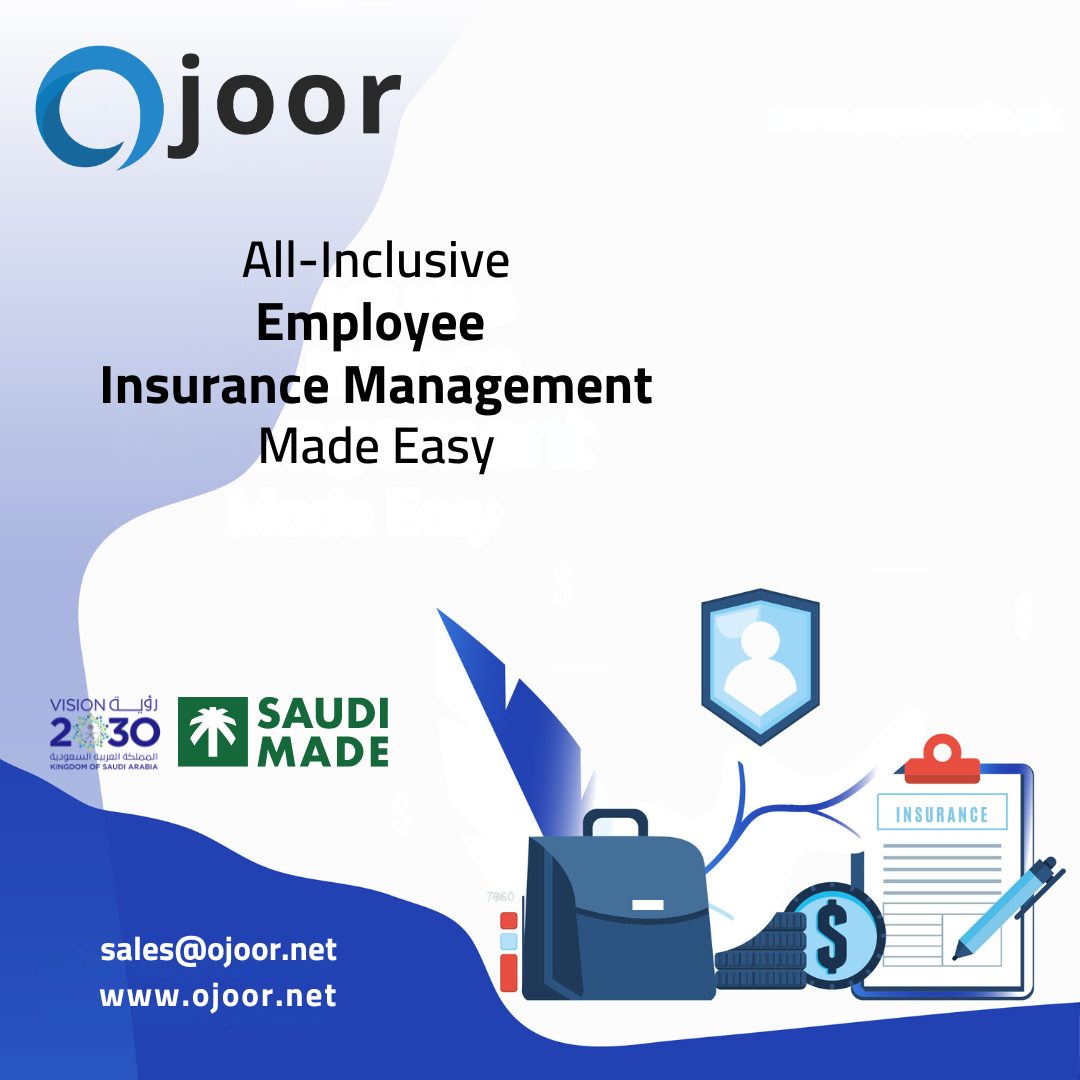Ojoor # 1 is one of the top Employee Management System in Saudi Arabia employee data have become paramount, especially with the increasing reliance on Employee Management Systems (EMS) in organizations. In Saudi Arabia, stringent regulations and cultural considerations add further complexity to this issue. This article delves into the importance of data security and privacy in EMS, the challenges faced, and the measures organizations can take to ensure robust protection of employee data within the Saudi Arabian context.
Click to Start Whatsapp Chatbot with Sales
Mobile: +966547315697
Email: sales@Ojoor.net
Ojoor #1 Employee Management System in Saudi Arabia

Importance of Data Security and Privacy in EMS
Protecting Sensitive Information
The Employee Management System in Saudi Arabia stores a wealth of sensitive information, including personal details, employment history, financial data, and health records. Ensuring the security and privacy of this data is crucial to prevent identity theft, financial fraud, and unauthorized access.
Compliance with Legal Regulations
Saudi Arabia has implemented stringent data protection regulations, such as the Personal Data Protection Law (PDPL), which mandates organizations to safeguard personal data and ensure privacy. Non-compliance can result in severe penalties, making it imperative for organizations to adhere to these regulations.
Maintaining Trust and Reputation
Data breaches can significantly damage an organization’s reputation and erode trust among employees and stakeholders. Ensuring data security and privacy helps maintain a positive organizational image and fosters trust among employees, who are assured that their personal information is handled responsibly.
Challenges in Ensuring Data Security and Privacy
Rapid Technological Advancements
The rapid pace of technological advancements presents a challenge in maintaining robust security measures. As EMS systems evolve, so do the methods employed by cybercriminals, necessitating continuous updates and enhancements to security protocols.
Complexity of Compliance
Ensuring compliance with local regulations, such as the PDPL, can be complex. Organizations must navigate various legal requirements, often necessitating the expertise of legal professionals and compliance officers to interpret and implement appropriate measures.
Insider Threats
Insider threats, whether intentional or accidental, pose a significant risk to data security. Employee Management System in Saudi Arabia, with access to sensitive information can misuse it, or unintentional errors can lead to data breaches.
Integration with Other Systems
EMS often needs to integrate with other business systems, such as payroll, finance, and HR software. Ensuring secure data transfer and interoperability between these systems can be challenging and requires robust security protocols.

Measures to Ensure Data Security and Privacy
Data Encryption
Data encryption is a fundamental measure to protect sensitive information. By encrypting data both at rest and in transit, organizations can prevent unauthorized access even if the data is intercepted or breached. Advanced encryption standards, such as AES (Advanced Encryption Standard), are commonly used to secure HR System in Saudi Arabia data.
Access Controls
Implementing stringent access controls ensures that only authorized personnel have access to sensitive data. Role-based access control (RBAC) is an effective method where employees are granted access based on their roles and responsibilities, minimizing the risk of unauthorized data access.
Multi-Factor Authentication
Multi-factor authentication adds an additional layer of security by requiring users to provide two or more verification factors to access EMS. This reduces the risk of unauthorized access due to compromised passwords.
Regular Security Audits
Conducting regular security audits helps identify vulnerabilities and weaknesses in the EMS. These audits should be performed by internal security teams or external cybersecurity firms to ensure a comprehensive evaluation of the system’s security posture.
Employee Training and Awareness
Training employees on data security best practices and raising awareness about potential threats is crucial. Employees should be educated about phishing attacks, safe password practices, and the importance of reporting suspicious activities.
Data Anonymization
Data anonymization techniques can be employed to protect sensitive information by removing or masking personally identifiable information (PII). This ensures that even if data is accessed without authorization, it cannot be linked back to specific individuals.
Incident Response Plan
Having a robust incident response plan in place ensures that the organization can respond swiftly and effectively to data breaches. This plan should outline the steps to be taken in the event of a breach, including notification procedures, mitigation strategies, and recovery processes.
Compliance Management
Organizations should appoint compliance officers or data protection officers (DPOs) to oversee adherence to legal regulations. These professionals are responsible for ensuring that the organization’s data protection policies and practices align with local laws, such as the PDPL.
Secure Data Storage
Storing data in secure environments, such as cloud services with strong security measures, is essential. Organizations should choose cloud service providers that comply with international security standards and offer robust data protection features.
Technological Solutions for Data Security
Blockchain Technology
Blockchain technology offers a decentralized and immutable ledger for recording transactions. It can be used in EMS to enhance data integrity and security by providing a transparent and tamper-proof record of employee data transactions.
Artificial Intelligence (AI) and Machine Learning (ML)
AI and ML can be leveraged to detect and respond to security threats in real-time. These technologies can analyze patterns and anomalies in data access and usage, alerting security teams to potential breaches.
Biometric Authentication
Biometric authentication methods, such as fingerprint scanning and facial recognition, provide an additional layer of security for EMS. These methods are more difficult to forge compared to traditional passwords.
Secure APIs
When integrating LMS training with other business systems, secure APIs (Application Programming Interfaces) should be used. These APIs ensure that data is transmitted securely between systems, protecting it from interception and unauthorized access.
Best Practices for Implementing EMS in Saudi Arabia
Understand Local Regulations
Organizations should thoroughly understand local data protection regulations, such as the PDPL, and ensure that their EMS complies with these laws. This includes implementing necessary data protection measures and obtaining necessary consent from employees.
Partner with Reputable Vendors
Choosing reputable EMS vendors with a proven track record of data security and privacy is crucial. Organizations should evaluate vendors based on their security certifications, compliance with international standards, and customer reviews.
Conduct Risk Assessments
Regular risk assessments help identify potential vulnerabilities and threats to the EMS. These assessments should be conducted periodically to ensure that security measures are up-to-date and effective.
Implement Data Minimization
Data minimization involves collecting and retaining only the necessary amount of personal data required for business operations. By minimizing the amount of sensitive data stored in the EMS, organizations can reduce the risk of data breaches.
Continuous Monitoring
Continuous monitoring of the EMS for security threats and vulnerabilities is essential. Security information and event management (SIEM) systems can be used to monitor and analyze security events in real time, enabling quick responses to potential threats.
Conclusion
Ensuring data security and privacy in Employee Management Systems is a critical concern for organizations in Saudi Arabia. With the increasing reliance on digital systems to manage employee data, robust security measures are essential to protect sensitive information, comply with legal regulations, and maintain trust and reputation.
Organizations must adopt a multi-faceted approach to data security, incorporating advanced technologies, stringent access controls, regular audits, and continuous employee training. By understanding local regulations and partnering with reputable vendors, businesses can create a secure environment for managing employee data.
As technology continues to evolve, staying ahead of emerging threats and maintaining a proactive approach to data security will be crucial. By implementing comprehensive security measures and fostering a culture of data protection, organizations in Saudi Arabia can ensure that their Employee Management Systems remain secure, compliant, and effective in supporting their workforce.
Click to Start Whatsapp Chatbot with Sales
Mobile: +966547315697
Email: sales@Ojoor.net
Employee management system in Saudi Arabia
Employee management system in Saudi Arabia
Employee management system in Saudi Arabia
Data Security in Employee Management System in Saudi Arabia similar software solutions prices were updated on 2025-07-18T23:20:17+00:00 in Saudi Arabia in Mecca, Medina, Riyadh, Khamis Mushait, Yanbu, Jeddah, Dammam, Unaizah, Uqair, Ha’il, Ta if, Al Bahah, Dhahran, King Abdullah Economic City, Najran, Diriyah, Qatif, Khafji, Jubail, Abqaiq, List of Cities and Towns in Saudi Arabia, Ras Tanura, Turubah, Jazan Economic City, Knowledge Economic City, Medina, Khobar, Abha, Tabuk, Saudi Arabia, similar software solutions prices were updated on 2025-07-18T23:20:17+00:00 We also provide in Saudi Arabia services solutions company in Hafar Al-Batin, Udhailiyah, Al-Awamiyah, Hofuf, Hautat Sudair, Buraidah, Tayma, Duba, ‘uyayna, Saihat, Al-Kharj, Al-ula, Jizan, Rumailah, Ar Rass, Arar, Shaybah, Al Majma’ah, Rabigh, Dhurma, Haradh, List of Saudi Cities by Gdp Per Capita, Badr, Sudair Industrial City, Baljurashi, Shaqraa, Al-Khutt, Habala, Ad Dawadimi, Dawadmi, Layla, similar software solutions prices were updated on 2025-07-18T23:20:17+00:00 Price is SAR 100 and this was updated on updated on 2025-07-18T23:20:17+00:00 similar Data Security in Employee Management System in Saudi Arabia software solutions prices were updated on 2025-07-18T23:20:17+00:00 in Saudi Arabia in Haql, Afif, Al-Abwa, Farasan, Al-Jaroudiya, Thadig, Al-Thuqbah, Al Wajh, Almardmah, Al-Zilfi, Muzahmiyya, Prince Abdul Aziz Bin Mousaed Economic City, Tharmada’a, Skaka, Um Al-Sahek, Sharurah, Tanomah, Bisha, Dahaban, Al Qunfudhah, Qurayyat, Saudi Arabia, Ha’ir, as Sulayyil, Al Lith, Turaif, Al-Gway’iyyah, Samtah, Wadi Ad-Dawasir, Az Zaimah, Safwa City, Jalajil, Harmah, Mastoorah, Hotat Bani Tamim, Jabal Umm Al Ru’us, Rafha, Qaisumah, Al-Ghat, Hajrah, Al-Hareeq. Excerpt: Jeddah (also spelled Jiddah, Jidda, or Jedda; Arabic: Jidda) is a Saudi Arabian city located on the coast of the Red Sea and is the major urban center of western Saudi Arabia similar software solutions prices were updated on 2025-07-18T23:20:17+00:00 Price is SAR 100 and this was updated on updated on 2025-07-18T23:20:17+00:00
6-5-2024

